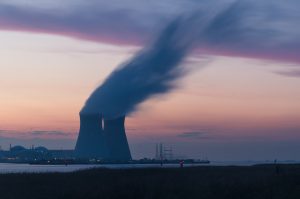4 Active Energy Funds For Aggressive Investors
Consider these active energy funds for exposure to a sector that could rebound later this year
The energy sector started off 2019 in fine fashion, but a confluence of negative factors recently pressured the sector. As of May 15, the S&P 500 Energy Index was lower by 4.63% on a month-to-date basis. May usually marks the start of the seasonally weak period for the energy sector, but the flare up in trade tensions between the U.S. and China is likely behind the sector’s recent lethargy.
While the recent weakness in the energy patch may have scared some investors away, there are valid reasons to at least keep an eye on energy funds. These include decent second-quarter earnings expectations.
“During the month of April, analysts lowered earnings estimates for companies in the S&P 500 for the second quarter,” said FactSet in a recent note. “The Q2 bottom-up EPS estimate (which is an aggregation of the median EPS estimates for all the companies in the index) dropped by 1.0% (to $41.04 from $41.45) during this period.”
However, there is good news for energy investors.
“On the other hand, three sectors recorded an increase in their bottom-up EPS estimate during the first month of the quarter, led by the Energy (+11.1%) sector,” according to FactSet. “Within the Energy sector, Chevron Corp. (NYSE:CVX) was a substantial contributor to the increase in earnings over this period.”
When it comes to energy funds, investors may want to consider putting active management on their side. That could help them play a rally in the sector. Here are some actively managed energy funds to evaluate.
Energy Funds: First Trust North American Energy Infrastructure Fund (EMLP)
Expense Ratio: 0.95% per year, or $95 on a $10,000 investment.
The First Trust North American Energy Infrastructure Fund (NYSEARCA:EMLP) is an exchange-traded fund (ETF), but it is an actively managed energy fund, meaning it merits a place on this list. In fact, with $2.44 billion in assets under management, EMLP is the largest equity-based actively managed ETF in the U.S.
EMLP is a play on the North American energy boom, as the energy fund invests in master limited partnerships (MLPs) “pipeline companies, utilities, and other companies that derive at least 50% of their revenues from operating or providing services in support of infrastructure assets,” according to First Trust.
EMLP has a 12-month distribution rate of 4%, which is well above the 3.12% on the S&P 500 Energy Index. This energy fund has been one of the best-performing products in this fund category since coming to market nearly seven years ago.
InfraCap MLP ETF (AMZA)
Expense Ratio: 2.4%
As its name implies, the InfraCap MLP ETF (NYSEARCA:AMZA) is also an ETF, but like the aforementioned EMLP, this is an actively managed energy fund as well. AMZA typically invests in midstream MLPs and can employ some leverage to boost income and the fund’s beta. AMZA’s managers can also employ short positions as hedges against fluctuations in interest rates and oil prices.
AMZA “offers the potential for attractive yields and employs modest leverage to pursue compelling total return results,” according to the issuer. “Security selection and weightings are based on security-level fundamental analysis and technical factors instead of market capitalization.”
AMZA turns five years old later this year and is home to $484 million in assets under management. This energy fund is quietly climbing the ranks of the largest actively managed ETFs, too.
ProShares K 1 Free Crude Oil Strategy ETF (OILK)
Expense Ratio: 0.65%
Unlike the other energy funds highlighted to this point, the ProShares K 1 Free Crude Oil Strategy ETF (CBOE:OILK) is not an equity-based product. Rather, it focuses on West Texas Intermediate (WTI) futures, the benchmark domestic oil contract.
Active management can actually help investors minimize the costs and often-laggard returns associated with passively managed futures-based energy funds. OILK, which is nearly three years old, “seeks to provide total return through actively managed exposure to the West Texas Intermediate crude oil futures markets,” according to Maryland-based ProShares.
Predictably, OILK is sensitive gyrations in the oil market. While the fund is up 37.55% year-to-date, it labors 21% below its 52-week high, indicating there could be upside here if oil rallies again.
Dreyfus Natural Resources Fund Class I (DLDRX)
Expense Ratio: 1%
The Dreyfus Natural Resources Fund Class I (MUTF:DLDRX) is a traditional, actively managed mutual fund that has the flexibility to invest in an array of natural resources companies of vary market caps. This energy fund, which has a minimum investment requirement of $1,000 can also feature some fixed income exposure.
“The fund seeks long-term growth of capital,” according to the issuer. “To pursue its goal, the fund normally invests at least 80% of its net assets, plus any borrowings for investment purposes, in common stocks or securities convertible into common stocks (such as convertible preferred stocks, warrants and convertible bonds) of foreign companies and depositary receipts evidencing ownership in such securities. At least 75% of the fund’s net assets will be invested in countries represented in the MSCI EAFE Index.”
Currently, the fund’s 37 holdings run the gamut of integrate oil companies, mining firms, fertilizer makers and others. Nearly 43% of DLDRX’s weight is allocated to integrated oil firms and agribusiness companies. This energy fund earns a “neutral” rating from Morningstar.
As of this writing, Todd Shriber does not own any of the aforementioned securities.
See Also From InvestorPlace:
- 7 ETFs for Healthy Healthcare REITs
- 5 Great Tech ETFs That Aren’t the XLK
- 7 Safe Stocks to Buy for Anxious Investors
Category: Commodity ETFs




